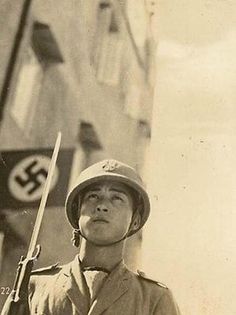German Spies in China (1)
- By Peter Harmsen
- 9 October, 2016
- No Comments
In June 1940, German official Theodor Louis Siefken, who was working in Italy extracting Germans from East Africa amid the widening war with Great Britain, was recalled to Berlin. His masters had other plans for him. Siefken, who had served in the German air force during World War One, was to go to Shanghai and set up an espionage network in China for the Abwehr, the Third Reich’s intelligence service. In preparation for this task, he was trained in codes, microphotography and other skills required of a spy.
Shortly afterwards, Siefken left Germany for China, arriving in Shanghai during the fall of that year under the cover of being a “commercial advisor” at the German consulate. He was joined by Walter Richter, another Abwehr agent recently assigned to China, who was to work for Siefken as a radio operator. Once in China, Siefken began recruiting actively among German nationals already residing in China, including a number of people with considerable previous shipping expertise.
This was no coincidence, as the main purpose of the Siefken organization was to monitor shipping in the Pacific, as US intelligence described in a detailed secret report completed in 1946. His agents obtained the intelligence in four ways: by reading newspapers published in Shanghai, Manila, Singapore, Batavia, San Francisco and Honolulu; by intercepting radio messages about the ships’ positions; by taking photos of Allied ships in Shanghai harbor, with special focus on new inventions; and by using local agents, who often got their information from sailors in local bars.
In addition to his core group of agents, Siefken also ran a loosely organized network, which included several German journalists doubling as spies, as well as informants across East Asia, including one in Japanese-controlled puppet state of Manchuria, and another in Bangkok.
Siefken’s cooperation with Italian agents operating in China was very close. “He set up in collaboration with them a radio receiving station in Shanghai, where they cooperated very closely in the intercepting of all kind of news, decoding of coded material and collecting of all possible military and naval intelligence,” according to the US intelligence reports from 1946.
While Siefken’s relationship with the Italians was excellent, his cooperation with the Japanese was poor. “The Japanese never trusted Siefken nor gave him permission to operate his own transmitter,” according to the US intelligence report. Of course, this was a huge disadvantage, since the Japanese were in control of all of East China and had the power to make work extremely difficult for Siefken.
The Japanese did so in August 1942, when they ordered the end of radio transmissions from the Shanghai building Siefken had picked for that particular purpose. As a last resort, Siefken used his good Italian connections to move to Beijing, where he was able to use a powerful transmitter operated by the Italian Navy for sending messages back home.
However, Siefken’s days as the top German spymaster in China were approaching an end. Rivals within the local German intelligence community who may have sought to engineer his ouster seized the opportunity in September 1942, when he was ill and hospitalized in Beijing. He was dismissed, and his entire espionage organization was taken over by another German, Lieutenant Colonel Ludwig Eisentraeger.
(This is the first in a series of articles)




 Copyright © 2025
Copyright © 2025
Leave a Reply